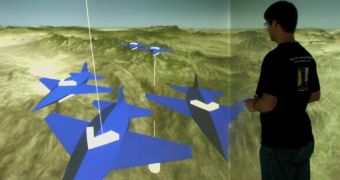Virtual tours offer tourists a recreated view of famous historical sites that are either inaccessible or have been damaged or destroyed over time. In some cases, this is the only way to travel in time and walk around mankind's greatest construction achievements.
Technology from computer games, animation and artificial intelligence provide the elements to make this happen, but many of the tours focus on the computer graphics and interaction. As computer speed and technology improve and costs drop, the equipment required by these virtual time travels costing more than $1 million a few years ago can now be purchased for tens of thousands of dollars less.
The are many examples of this technology being put to good use, and it proves to be a viable attraction as well as a means of educating people about the past and about ourselves.
The Archaeology Technologies Laboratory at North Dakota State University used 3-D computer visualizations to re-create the On-A-Slant village of the Mandan, a tribe that inhabited the Plains area.
Another example is the Colonial Williamsburg Foundation, which is creating a virtual 3-D model of a recently excavated theater in Williamsburg, the restored 18th-century capital of Virginia, with an upcoming virtual tour of the entire town.
Boston's Museum of Fine Arts has recreated a temple and a palace built by Egyptian Pharaoh Akhenaten and Queen Nefertiti, in 3-D. As Phil Getchell, the museum's director of new media, said, they are trying to find new ways of popularizing ancient artifacts and sites, which will no longer be seen by some visitors as just pieces of rock and tools, but will be observed as an integrated part of a historical site.
"It really seems to have taken off over the past two or three years, especially as it has become more affordable," Getchell said. "Depending on the project, you can still spend a lot generating the content itself, but the equipment and technology is easier to use and more affordable," said Donald Sanders, president of Learning Sites Inc., a company that designs and develops interactive 3-D models of sites, including those of a palace at Nimrud in Iraq.
"It creates a vivid image that can persist in the public imagination and provide more insight and appreciation of lost architecture and cultures," said John Hancock, a University of Cincinnati architecture professor and director of "Earthworks: Virtual Explorations of the Ancient Ohio Valley."
The improvements of the 3-D environment applications will be immediately visible, as scientists are beginning to very accurately model the effects of smoke, dust, fog and interior lighting conditions, all of which would have impacted on the way that buildings were experienced by contemporaries.

 14 DAY TRIAL //
14 DAY TRIAL //